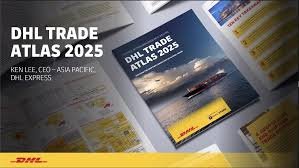Singapore
By Maria Kalamatas | The Logistic News
June 9, 2025 – Section: Business
For Ken Lee, CEO of DHL Express Asia-Pacific, the global trade landscape isn’t collapsing. It’s adapting. And despite rising tariffs and tense headlines, he sees opportunity—not retreat.
Speaking during a logistics summit in Singapore this week, Lee addressed a question on many minds: can international trade survive a surge in protectionism?
“Yes,” he replied. “But not in the same way it used to work. Trade is evolving, and we’re evolving with it.”
Lee pointed to a noticeable shift in traffic patterns across DHL’s network. While some lanes—particularly to and from the U.S.—have grown more complex due to new tariffs, others have surged. Intra-Asia shipments, he noted, are seeing record growth. So is e-commerce, especially from smaller exporters entering global markets digitally.
Rather than cut back, DHL has increased investment in regional hubs, opened new routes between Southeast Asia and Australia, and fine-tuned customs automation to reduce friction for cross-border shipments.
“It’s not about waiting for perfect conditions,” Lee said. “It’s about being agile when the rules change.”
Economists attending the event echoed the sentiment. Global trade, they suggested, is no longer shaped by a single policy or superpower. Instead, it’s being redefined by multiple, shifting forces—regional deals, digital sales, diversified supply chains.
Meera Chandran, a trade consultant based in Kuala Lumpur, noted that “the traditional flows may be slower, but new ones are opening. DHL is just leaning into those changes sooner than most.”
As geopolitical uncertainty continues to affect everything from energy prices to import duties, DHL’s message is firm: trade will continue—not untouched, but undeterred.
And that, for now, may be the difference between reacting and leading.
✎ Maria Kalamatas
Senior Correspondent – Business Strategy
The Logistic News






















